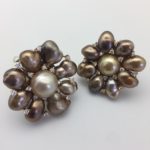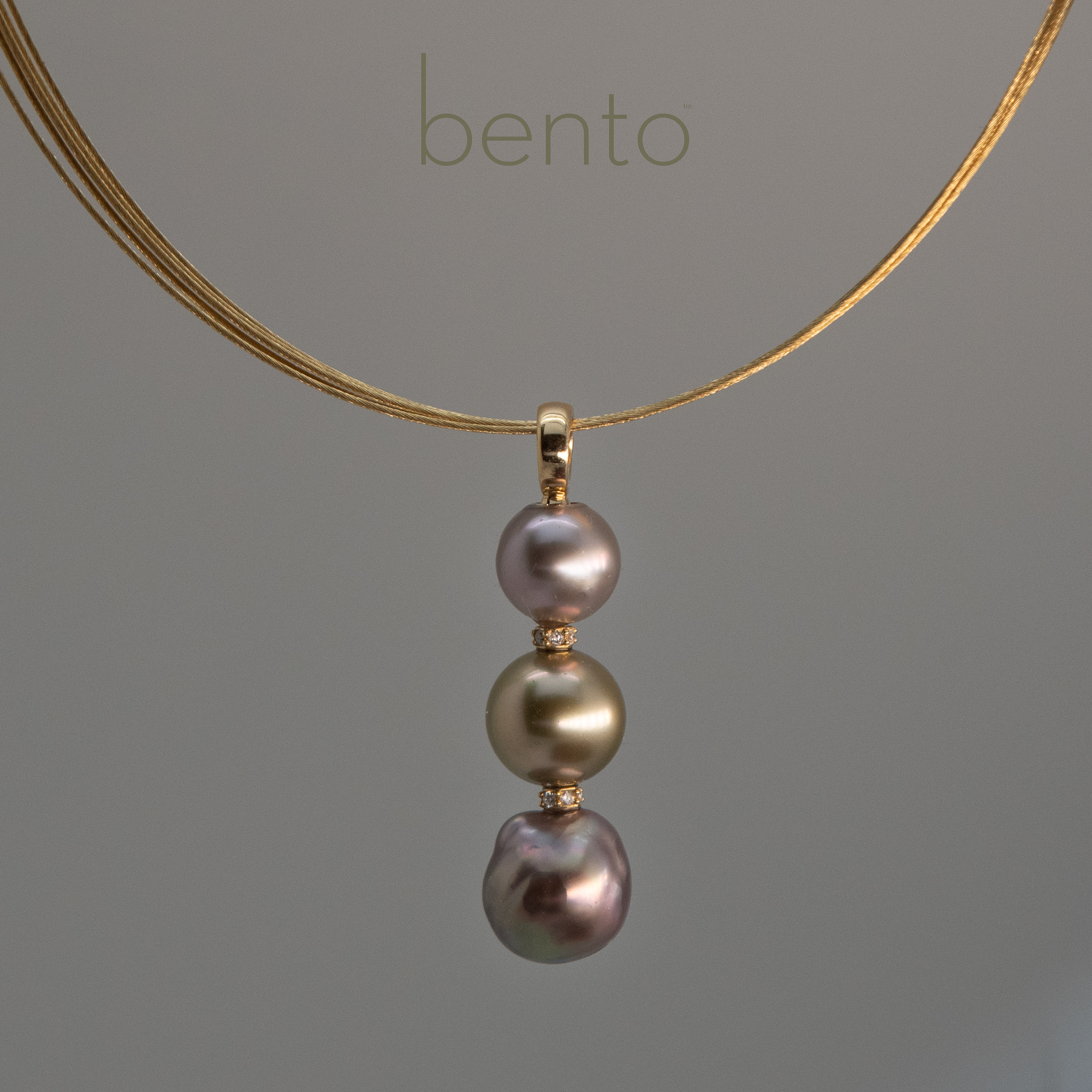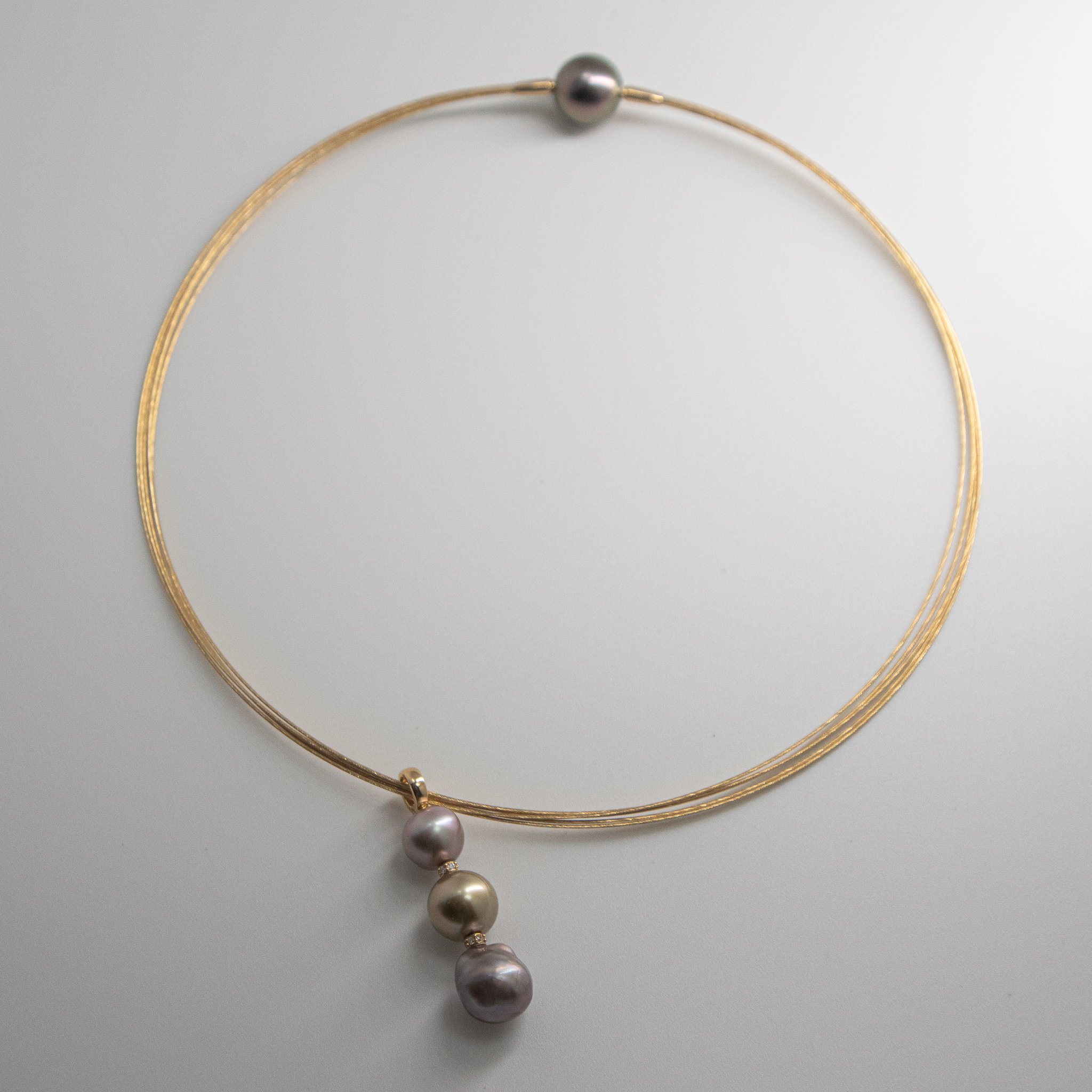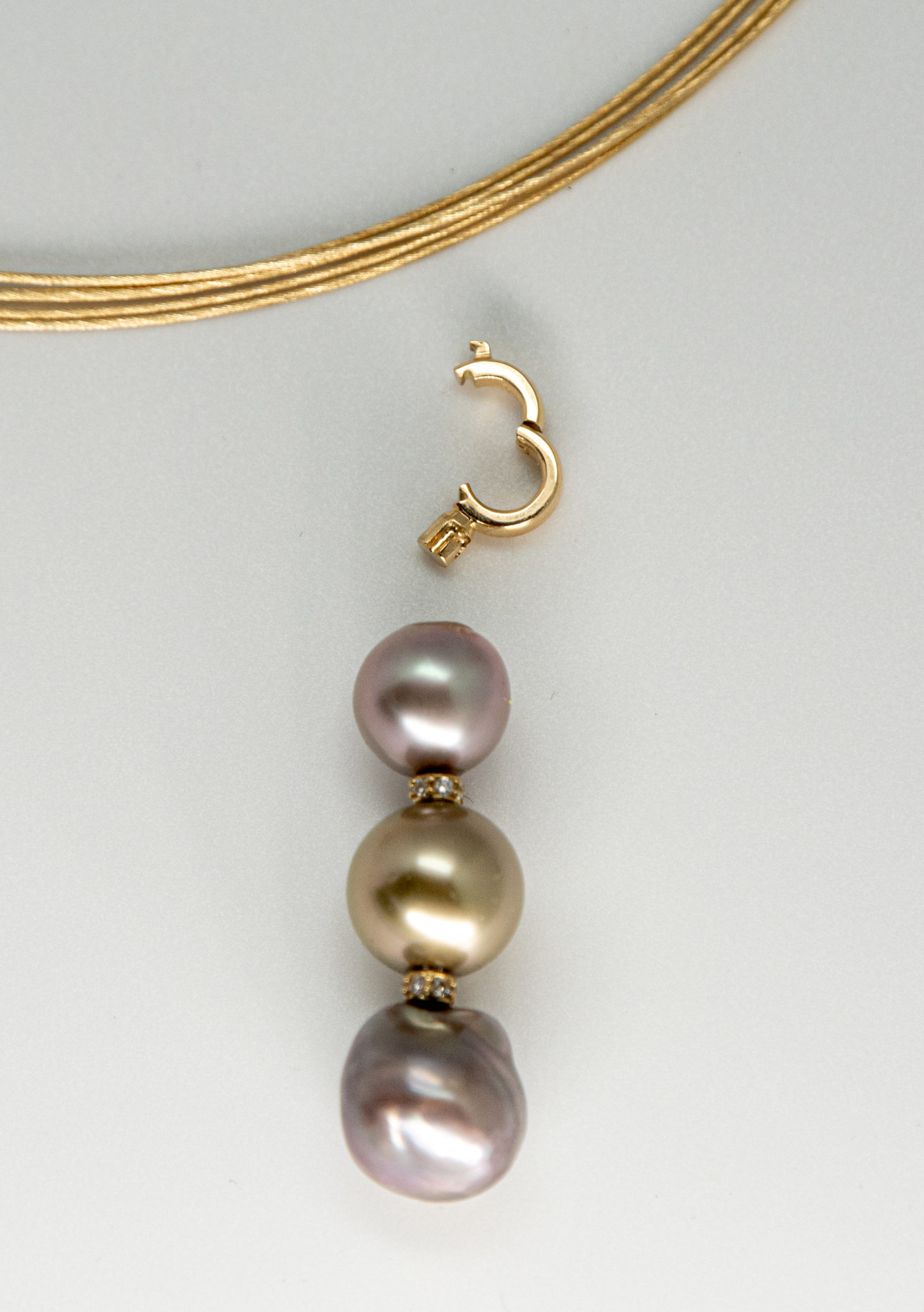Sea of Cortez & Tahitian pearls on an interchangable 18K gold open bale
Meet the Bento Three Pearl Pendant: Three exceptional salt water pearls chosen for their individual beauty, amplified by their relationship to one another. In this case, two sublime Sea of Cortez pearls, each manifesting the orient of magentas and pale lavender pinks distinctive to their species of oyster, flank one pistachio/golden Tahitian pearl with just the right chartreuse hue to complement the pinks. This pendant looks fabulous on the elegant multi-strand 18K gold choker as shown here with an interchangeable pearl clasp. The open bale detaches from the pearls and can be used for other pendants that utilize the tube and key German hardware.
designer: atelier bento
details:
- pearls: Sea of Cortez & Tahitian salt water pearls
- pearl quality: AAA
- pearl sizes: 9.8, 10.8 & 11.8
- gold content: 18K yellow gold
- pendant length: 1.75 inches
$2700 (pendant) $2400 (optional Choker & Clasp)
item: P 00008 (shown with Jörg Heinz 18K multi-strand choker and Tahitian pearl interchangeable clasp - Sold separately)
availability: one-of-a-kind
CONTACT: 520-906-7187
about Sea of Cortez Pearls:
Perlas del Mar de Cortez are some of the rarest cultured salt water pearls in the world and the only salt water pearls stewarded in the Americas. There's this place... Bahia Bocachibampo, near Guyamas, Sonora, Mexico on the Sea of Cortez, where a lone pearl farm produces a limited number (only about 4000 per year) of these highly sought after pearls. This is only after the oyster has been nurtured for at least four years! The pearls come from the rainbow-lipped pearl oyster, Pteria sterna, which is found only in Baja, Mexico and northern Peru. Although the oyster is relatively small, pearls of up to 13mm have been harvested. With the name rainbow-lipped pearl oyster one can imagine the variety of colors that can be found. The orient, or play of color, is often spectacular, with magentas and blues dancing around the surface of the pearl.
How does one distinguish a rare Sea of Cortez pearl? Cortez Pearls are the only pearls that glow (fluoresce) a light pink to deep blood red (for the darkest pearls) under long wave UV light. It’s like having a 100% natural built-in identification method.
To learn more, take a visit to the website of Perlas Del Mar de Cortez. It is a fascinating story of the brave souls who have worked so hard to revive pearling in the Sea of Cortez.
about Tahitian Pearls:
Exotic black pearls from the Pinctada margaritifera or Black-lip pearl oyster, are more commonly known as Tahitian pearls. These pearls are often referred to as black, but have a remarkable color range that covers the spectrum - from light, creamy white and grey, to regal greens, iridescent peacock and deep black. Tahitian pearls are relative newcomers to the pearl world, popularized only as early as the mid-1970's by the efforts of Jean Claude Brouillet, Salvador Assael, Robert Wan and others.
Unlike the more common pearl types, Tahitian pearls typically have a naturally dark body color. These pearls have become some of the most sought-after, expensive pearls in the world. Because of their vast color range, matching these pearls into a finished strand is an enormous task requiring thousands of loose pearls to create a single strand.
Tahitian pearls are considered to be the second most valuable commercially farmed pearls in the world. Tahitians come by their dark nacre color naturally. Tahitian pearls are bead-nucleated, but unlike akoya pearls, the nacre is typically very thick. The thinnest nacre allowed by French Polynesian law for export is 0.8 mm, which is a depth that would be considered, in the Akoya world, extremely thick.
Cultured Tahitian Pearls debuted in the early 1970's and have become the iconic "Black Pearl" of the black lipped pearl oyster Pinctada margaritifera cultivated in French Polynesia. These pearls actually exhibit the widest spectrum of colors of any salt water pearl from almost black to peacock green, eggplant pistachio silver, blue and sometimes almost white. Pinctada margaritifera occupies a wide range throughout the Persian Gulf, Red Sea, Sudan, Papua New Guinea, Australia, French Polynesia, Cook Islands, Indonesia, Andaman and Nicobar Islands, Southwestern part of the Indian Ocean, Japan and the Pacific Ocean, and various locations on the coast of India.
YOU MAY ALSO LOVE:
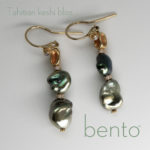
Society (Islands) Girl
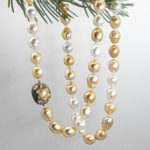
Flower Island
CONTACT: 520-906-7187
